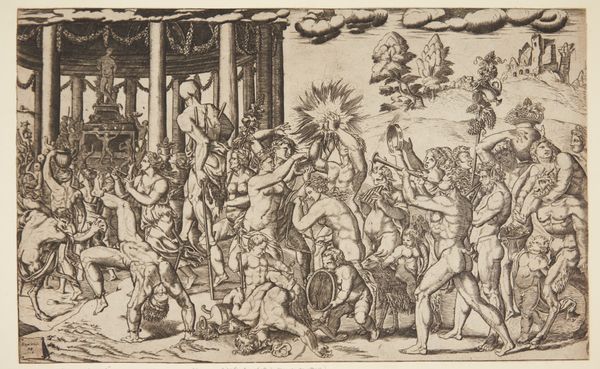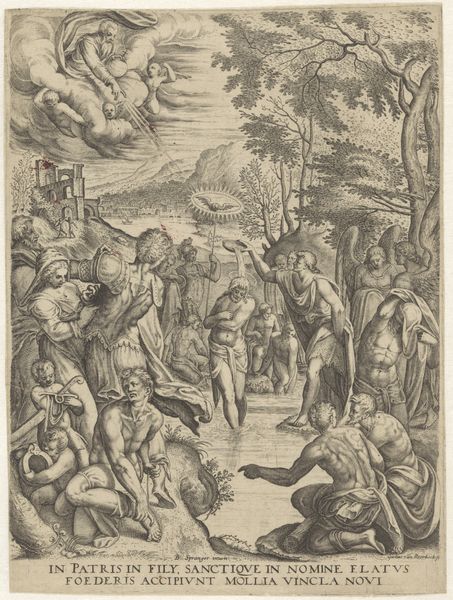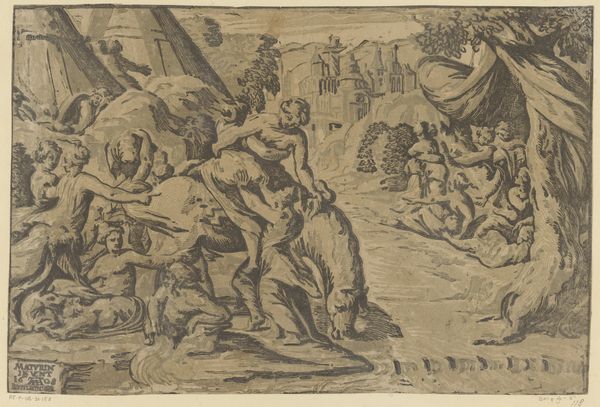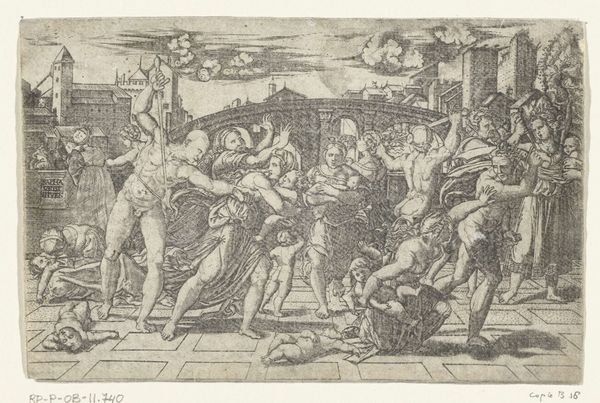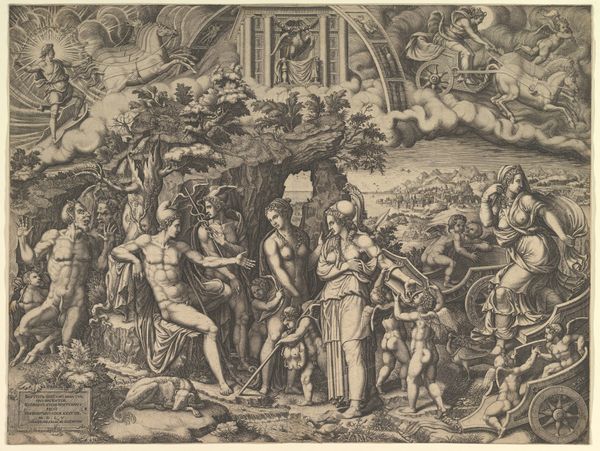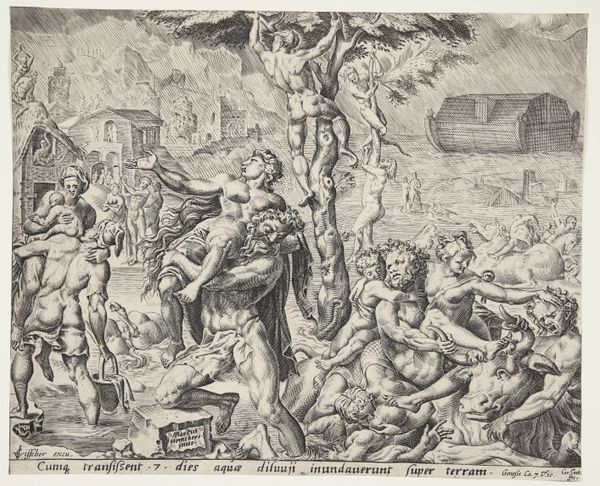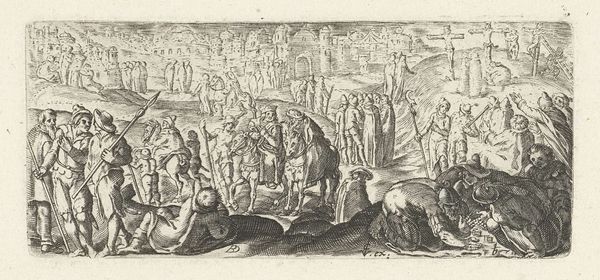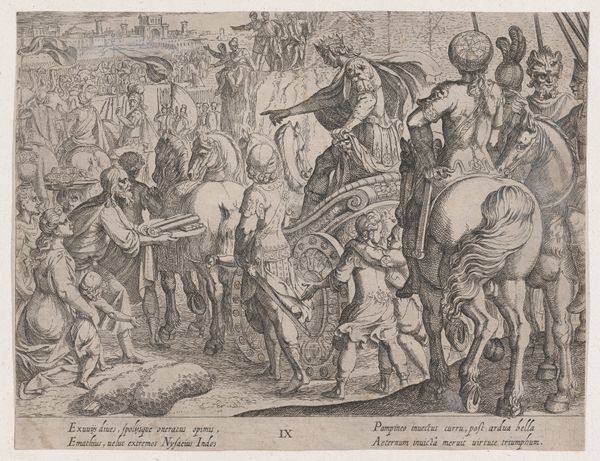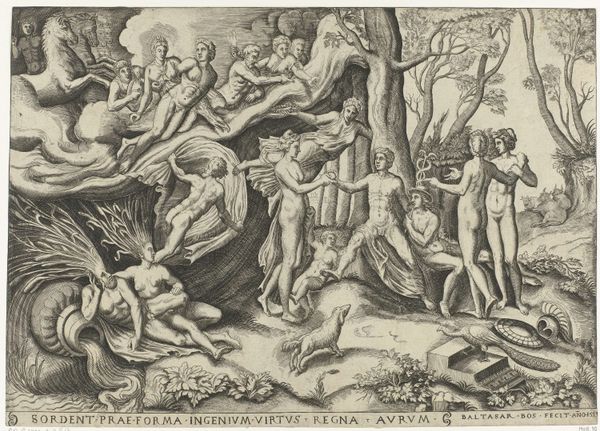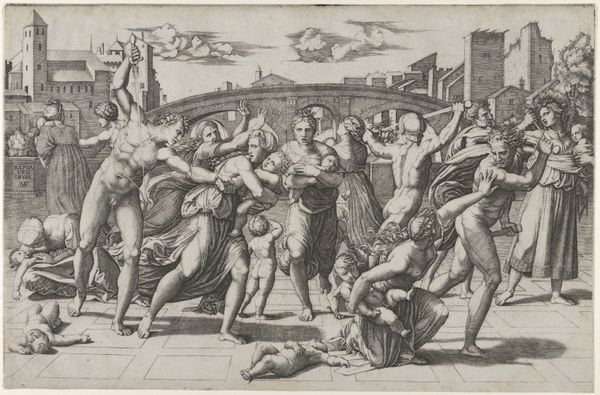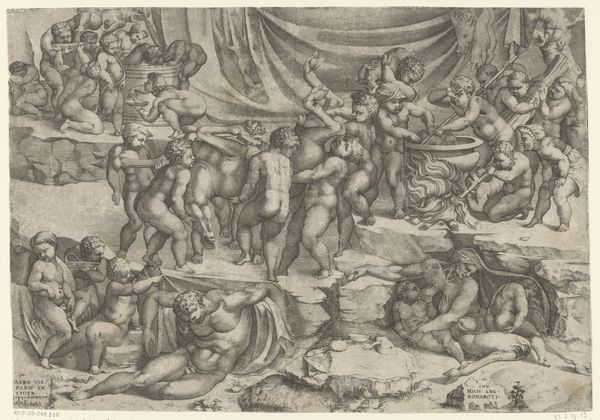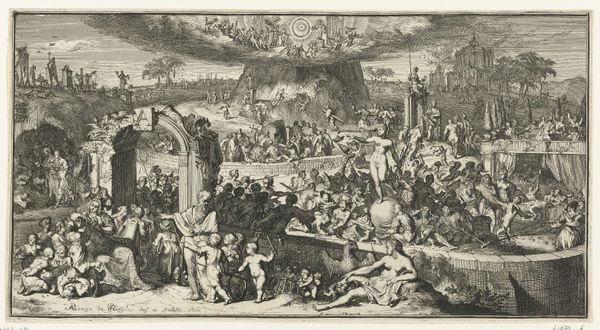
drawing, print, engraving
#
drawing
#
medieval
#
narrative-art
#
pen drawing
#
mechanical pen drawing
# print
#
pen illustration
#
landscape
#
figuration
#
ink drawing experimentation
#
pen work
#
sketchbook drawing
#
genre-painting
#
engraving
Dimensions: height 194 mm, width 259 mm
Copyright: Rijks Museum: Open Domain
Curator: Here we have Pieter van der Borcht the Elder's "Peasant Kermis," created in 1559. It's currently held here at the Rijksmuseum. Editor: My first impression? Absolute chaos, but in a carefully structured way. The composition teems with figures, but my eyes keep circling back to the frenetic energy in the lower left corner of the scene. Curator: It is a lively depiction of a village fair, showcasing various activities. You’ve got everything: dancing, drinking, brawling; all standard fare for such gatherings. But let's not forget the socio-economic implications of these kermises. They were vital to the peasant economy. Editor: I agree. I would like to notice how van der Borcht uses line to define form—observe the intricate pen work describing fabrics. And the density! Look how densely populated this scene is; what could that density of marks and bodies suggest formally? Curator: Consider how printmaking democratized images at the time. The image of the kermis would have allowed city dwellers, removed from village life, to consume images of the labor and leisure of the peasant class. Borcht presents us with a certain perception of these rural celebrations and daily rituals through the engraving medium. Editor: Notice also how light and shadow shape the overall dynamism. Van der Borcht’s hatching builds volume but contributes to a swirling rhythm. Is this controlled chaos in how it makes your eyes dart? Curator: Perhaps, though I’m more intrigued by the work that went into constructing this image in the first place; the tools used for printmaking and dissemination reflect broader shifts toward greater exchange and communication throughout Europe at this moment in the sixteenth century. It served multiple functions from providing livelihoods for the artists involved to being tools for knowledge to reach others. Editor: It’s funny. For all its bawdy energy, the lasting impression, at least for me, is its deliberate composure—the balance in the foreground balanced with that quiet cityscape and tall cathedral spire in the distance. Curator: I hadn't thought about it that way. Seeing it as part of this broader picture of cultural production and visual consumption has certainly deepened my own perspective on the artwork itself, I agree with your ideas of its own context.
Comments
rijksmuseum about 2 years ago
⋮
Both painted and printed depictions of peasant fairs were popular until well into the 17th century. They are invariably packed with festive activities, including wild dancing, drinking, playing and making love. The consequences of dipsomania too are not omitted, with brawling and vomiting drunkards. This freely etched sheet from 1549, only two impressions of which are known, is one of the earliest examples.
Join the conversation
Join millions of artists and users on Artera today and experience the ultimate creative platform.
